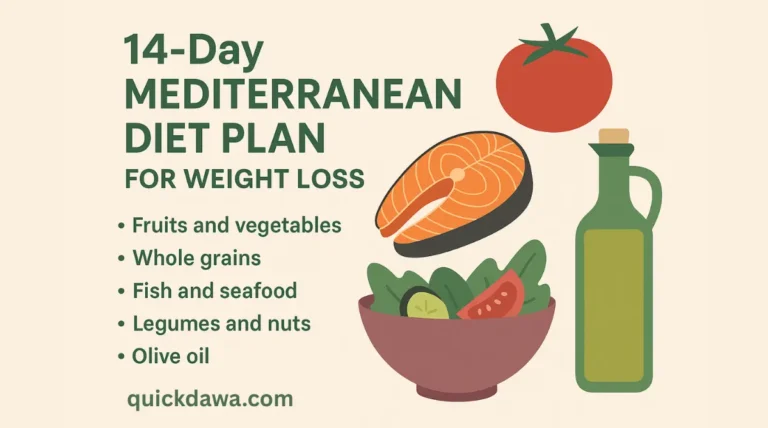Panadol – Top 16 Common Questions Explained
Panadol is one of the most widely used over-the-counter pain relievers worldwide, but it often sparks confusion due to its various brand names and comparisons to other medications.
This comprehensive guide addresses frequently asked questions from online searches, drawing from reliable medical sources to provide clear, evidence-based answers.
Whether you’re wondering about its equivalence to Tylenol, potential risks, or alternatives, we’ve got you covered.
Always consult a healthcare professional for personalized advice, as this is not a substitute for medical guidance.
Is Panadol the Same as Tylenol?
Yes, Panadol and Tylenol are essentially the same medication. Panadol is a brand name for paracetamol, which is the international name for the active ingredient known as acetaminophen in the United States and some other countries.
Tylenol is the most common brand name for acetaminophen in the US. Both drugs work identically to relieve mild to moderate pain and reduce fever.
The difference lies primarily in regional branding and availability Panadol is more commonly marketed in the UK, Australia, and other parts of the world by GlaxoSmithKline, while Tylenol is Johnson & Johnson’s flagship brand in the US.
If you’re traveling or shopping internationally, checking the active ingredient (paracetamol or acetaminophen) ensures you’re getting the same product.
What is Panadol in the USA?
In the USA, Panadol is not as commonly sold under that name, but its equivalent is widely available as acetaminophen or under brands like Tylenol.
Panadol contains paracetamol (acetaminophen), which is the generic drug used for pain relief and fever reduction.
You can find identical formulations in US pharmacies labeled as generic acetaminophen or Tylenol products. Some imported or specialty stores might carry Panadol, but it’s essentially interchangeable with US versions.
The FDA regulates acetaminophen products, and the maximum daily dose is typically capped at 4,000 mg to prevent overdose risks.
Is Panadol a Strong Painkiller?
Panadol is effective for mild to moderate pain but is not considered a “strong” painkiller compared to prescription opioids or even some over-the-counter alternatives like ibuprofen for certain conditions.
It provides relief for headaches, toothaches, menstrual cramps, muscle aches, and fever, with an onset of action around 30-60 minutes orally.
However, it’s less potent for severe pain, inflammation-related issues (like arthritis or back pain), or post-surgical discomfort, where NSAIDs like ibuprofen often perform better.
Studies show Panadol offers slight benefits for tension headaches or migraines but is inferior to ibuprofen for dental pain or osteoarthritis. For stronger relief, it’s sometimes combined with codeine or caffeine.
Is Panadol the Same as Ibuprofen?
No, Panadol (paracetamol/acetaminophen) is not the same as ibuprofen. Ibuprofen is a nonsteroidal anti-inflammatory drug (NSAID) that reduces pain, fever, and inflammation by inhibiting COX enzymes throughout the body.
Panadol primarily targets pain and fever in the central nervous system without significant anti-inflammatory effects, making it gentler on the stomach and suitable for those who can’t tolerate NSAIDs.
Ibuprofen (found in brands like Advil or Motrin) is often stronger for musculoskeletal pain or swelling but can cause gastrointestinal issues, ulcers, or kidney problems with long-term use.
Combining the two can provide better pain relief than either alone for acute conditions, but always check with a doctor to avoid interactions.
Who Should Not Take Panadol?
Certain individuals should avoid or use Panadol with caution:
- People with severe liver disease or a history of liver problems, as it can cause hepatotoxicity.
- Those with hypersensitivity or allergies to acetaminophen/paracetamol.
- Individuals with chronic alcohol use, as it increases the risk of liver damage.
- Patients with malnutrition, fasting states, or conditions like G6PD deficiency that affect drug metabolism.
- Those on medications that interact with it, such as warfarin (increases bleeding risk) or enzyme inducers like carbamazepine. Children under 2 years should only take it under medical supervision, and it’s not recommended for routine fever in infections without a doctor’s advice. Always disclose medical history to a healthcare provider before use.
Which is Stronger, Tylenol or Paracetamol?
Neither is stronger than the other because Tylenol and paracetamol are the same drug acetaminophen. Strength depends on dosage and the condition being treated.
Both provide equivalent relief for mild to moderate pain and fever. If comparing to other drugs, paracetamol/Tylenol is generally milder than opioids but comparable to aspirin, though less effective than ibuprofen for inflammatory pain.
Extended-release versions (like Tylenol 8HR) may provide longer-lasting effects, but the active ingredient’s potency remains the same.
What is a Generic for Panadol?
The generic name for Panadol is paracetamol (internationally) or acetaminophen (in the US). Generic versions are widely available and bioequivalent, meaning they work the same as the branded product but at a lower cost.
Examples include store-brand acetaminophen tablets or liquids from pharmacies like Walmart or CVS. These come in various strengths (e.g., 325 mg, 500 mg) and forms (tablets, capsules, suspensions).
Always check the label for the active ingredient to ensure it’s paracetamol/acetaminophen.
Can I Take Tylenol and Panadol Together?
No, you should not take Tylenol and Panadol together, as both contain the same active ingredient (acetaminophen/paracetamol).
Doing so risks exceeding the maximum daily dose (typically 3,000-4,000 mg), leading to overdose and potential liver damage. Symptoms of overdose include nausea, vomiting, and jaundice.
If you need stronger relief, consider combining acetaminophen with a different class like ibuprofen, but only under medical advice to monitor for interactions.
What is Similar to Panadol?
Similar medications include other brands of acetaminophen/paracetamol, such as:
- Tylenol (US)
- Calpol (for children, UK)
- Generic acetaminophen Alternatives in different classes:
- Ibuprofen (Advil, Motrin) for pain with inflammation
- Aspirin (Bayer) for pain and fever, but avoid in children due to Reye’s syndrome risk
- Naproxen (Aleve) for longer-lasting relief For non-drug options, try rest, ice/heat therapy, or hydration. Choose based on your symptoms e.g., NSAIDs for swelling, acetaminophen for simple pain.
What Are the Side Effects of Panadol?
At recommended doses, side effects are rare and mild, including:
- Nausea or abdominal pain (less common than with ibuprofen)
- Rash or itching (allergic reactions) Serious but rare effects:
- Liver damage from overdose (leading cause of acute liver failure)
- Skin reactions like Stevens-Johnson syndrome
- Increased blood pressure, heart rate, or kidney issues with chronic high-dose use
- Potential links to asthma or gastrointestinal bleeding (though minimal compared to NSAIDs) Overdose symptoms: vomiting, sweating, loss of appetite. Seek immediate help if suspected. Long-term use may cause abnormal liver tests or anemia.
What is Panadol Used For?
Panadol is primarily used to relieve mild to moderate pain (e.g., headaches, toothaches, backaches, menstrual cramps, osteoarthritis) and reduce fever from colds, flu, or infections. It’s also effective for post-vaccination discomfort or minor arthritis pain.
Unlike NSAIDs, it doesn’t treat inflammation, so it’s ideal for non-inflammatory conditions. In some cases, it’s combined with other drugs for migraines or dental pain.
It’s on the WHO’s List of Essential Medicines for its safety and efficacy in basic healthcare.
Is Panadol Safe During Pregnancy?
Yes, Panadol (acetaminophen) is generally considered safe during pregnancy and breastfeeding when used at the lowest effective dose for the shortest time.
It’s the preferred OTC pain reliever over NSAIDs like ibuprofen, which carry risks like miscarriage or fetal heart issues.
Studies show no major teratogenic effects, but some observational data suggest possible links to neurodevelopmental issues (e.g., ADHD) with prolonged high-dose use though causality isn’t proven.
Consult a doctor, especially if you have liver concerns or are in the third trimester.
How Much Panadol Can I Take in a Day?
The maximum daily dose for adults is 4,000 mg (4 grams), typically divided into 500-1,000 mg every 4-6 hours. For extra-strength versions, it’s often limited to 3,000 mg.
Children: Dose by weight (10-15 mg/kg every 4-6 hours, max 75 mg/kg/day).
Do not exceed limits to avoid liver toxicity. People with liver issues, alcohol use, or children should take less consult a doctor.
Measure liquids accurately and avoid combining with other acetaminophen products.
What is the Difference Between Panadol and Aspirin?
Panadol (acetaminophen) relieves pain and fever without anti-inflammatory or blood-thinning effects, making it safer for the stomach and suitable for those with bleeding risks.
Aspirin (an NSAID) also reduces pain and fever but additionally fights inflammation and prevents blood clots (used for heart health).
Aspirin can cause gastrointestinal ulcers or bleeding, and it’s avoided in children due to Reye’s syndrome.
Panadol is preferred for simple headaches, while aspirin is better for migraines or arthritis when combined with caffeine.
Can Panadol Cause Liver Damage?
Yes, Panadol can cause liver damage if taken in excess of recommended doses, as its metabolite (NAPQI) becomes toxic when glutathione stores are depleted.
It’s the leading cause of acute liver failure in many countries from overdose. Risk factors include alcohol use, fasting, or chronic high doses (>2-3 g/day).
Symptoms: nausea, jaundice, fatigue. Prevent by sticking to 4,000 mg max daily and avoiding alcohol. Treatment for overdose involves N-acetylcysteine.
Is Panadol Addictive?
No, Panadol is not addictive. It doesn’t produce euphoria or dependence like opioids (e.g., codeine). It’s a non-narcotic analgesic with no potential for abuse.
However, overuse can lead to rebound headaches or liver issues, so use as directed. If combined with addictive substances (e.g., in Panadol Extra with codeine), those components could pose risks, but pure Panadol does not.
Disclaimer
The information provided on quickdawa.com regarding medicine prices and side effects is solely based on data collected from public domains. I am not a doctor or medical professional. While I strive to provide accurate and up-to-date information, I cannot guarantee the absolute accuracy or completeness of the data. It is always recommended to consult with a qualified healthcare professional or doctor for personalized medical advice and information. The content on this blog should not be considered a substitute for professional medical guidance. The readers are advised to use the information provided at their own discretion and risk. I do not assume any responsibility for any consequences arising from the use of the information on this blog.
Thank you.






